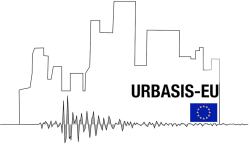URBASIS Training Course - Introduction to Nonlinear Dynamics: Application to Soils and Structures
Introduction to Nonlinear Dynamics: Application to Soils and Structures.
Zoom, 17- 18 November 2020
Lecture given by Fabian Bonilla (UGE) and Philippe Guéguen (UGA)
Introduction of the course
One of the key features in earthquake engineering is the evaluation of nonlinear site response, which happens when the strength of the soil is relatively low with respect to the amplitude of the incoming wavefield. Nonlinear soil behaviour is commonly studied using laboratory data where the evolution of shear modulus and damping ratio as a function of shear strain are measured. The recent developments in Seismology of robust signal processing tools to study Earth’s noise wavefield and the related velocity changes due to perturbations of the dynamic stress field can also be used on earthquake data. Yet, there are some questions that still remain unsolved, such as the nonlinear behaviour in 3D, is the phenomenon shallow or deep, or both? What is the effect on the ground motion and why it is important in seismic hazard analyses?
In addition, the main objective of this course is an introduction to the experimental dynamic response analysis of civil engineering structures during earthquake and perspectives related with Seismic Structural Health Monitoring. For building design, structural seismic demand is usually defined considering two structural parameters: resonance frequency and associated damping. Under moderate to strong shaking, a rapid change of these structural elastic properties is observed, impacting on the co-seismic demand. Several questions are still unanswered concerning the physical processes behind the time-dependence of these variations and the link with structural health. Additional properties assessed by seismological and geophysical methods applied to buildings open new perspectives to deal with these processes.
During these twin courses, we hope to introduce you to the exciting fields of nonlinear dynamics, in particular on soils and structures, from a theoretical and observational perspective.
Day 1 - 17th November 2020
- 10:00-12:00
Basic concepts of soil dynamics - 14:00-16:00
Basic concepts of experimental structural dynamics and SHM
Day 2 - 18th November 2020
- 10:00-12:00
What an acceleration time history can tell us about in-situ nonlinear soil response? - 14:00-16:00
How to we interpret building properties changes under earthquakes?
Registration closed
Updated on 27 April 2021






